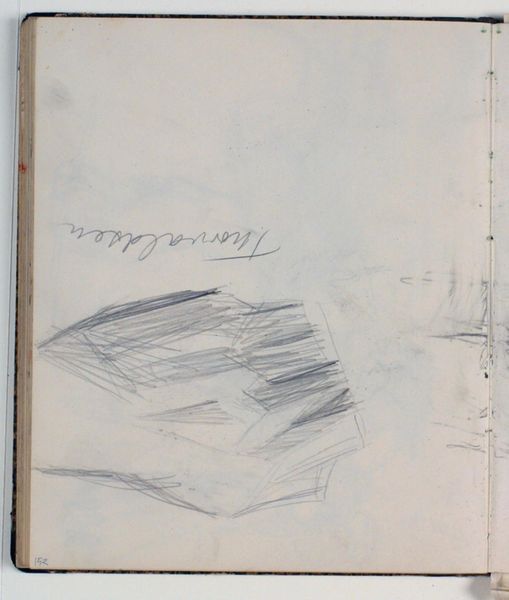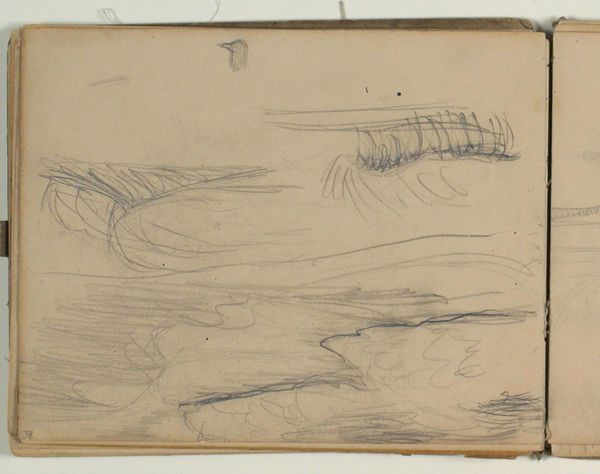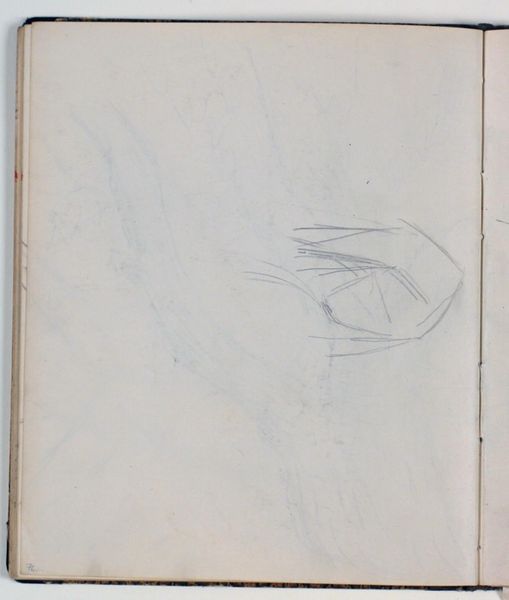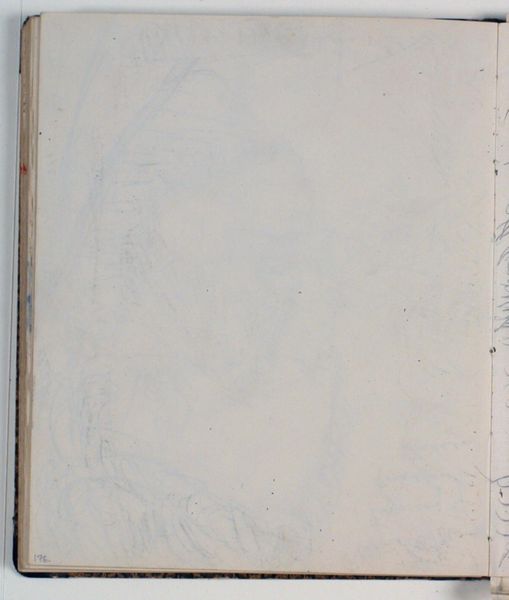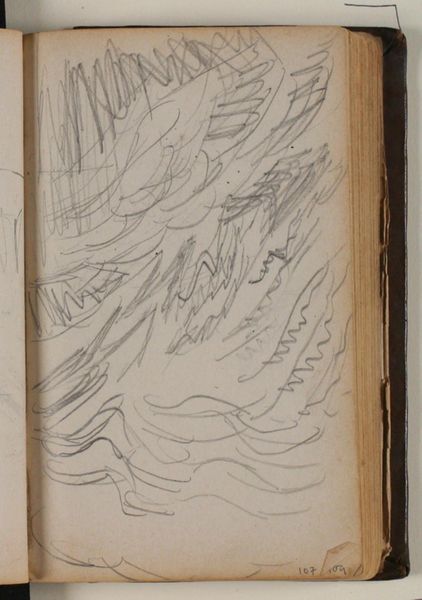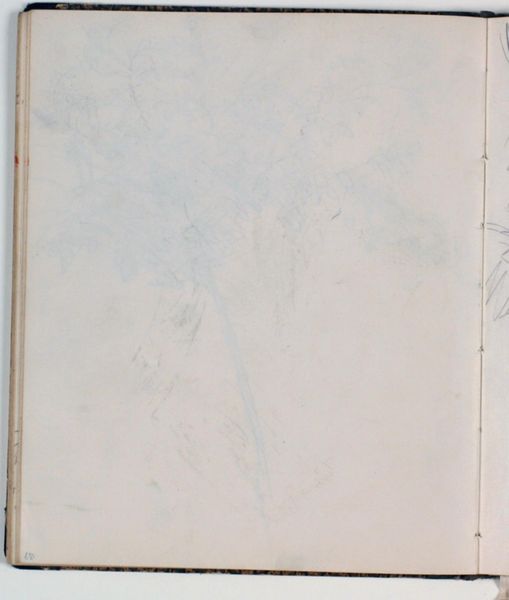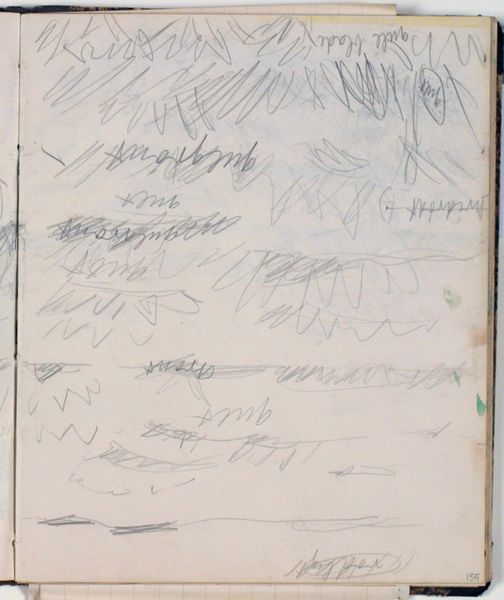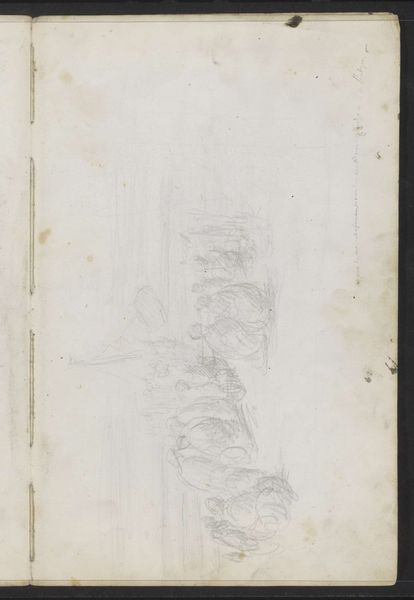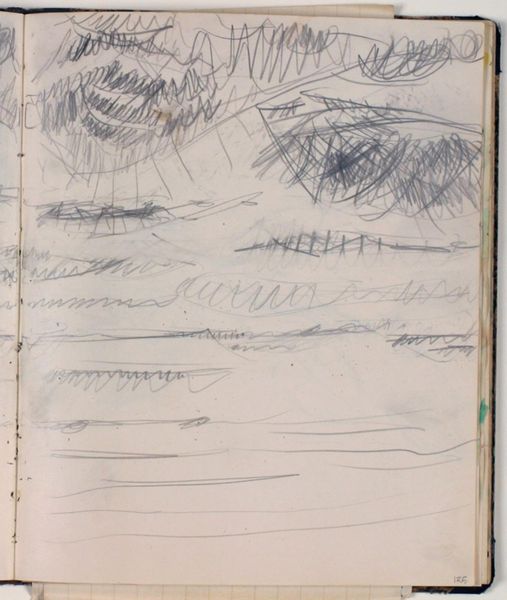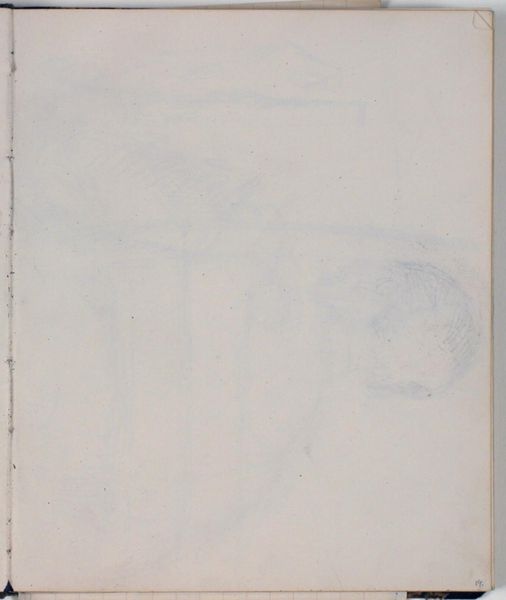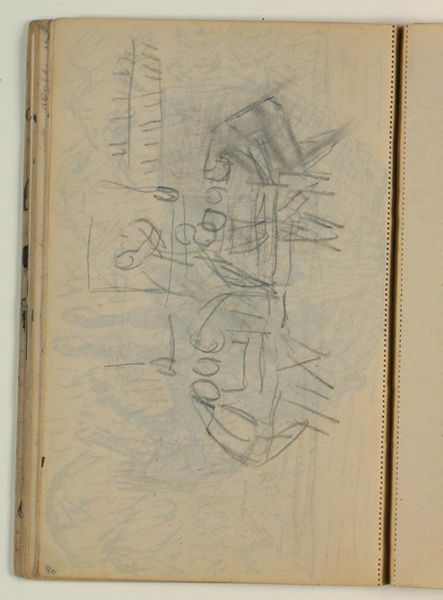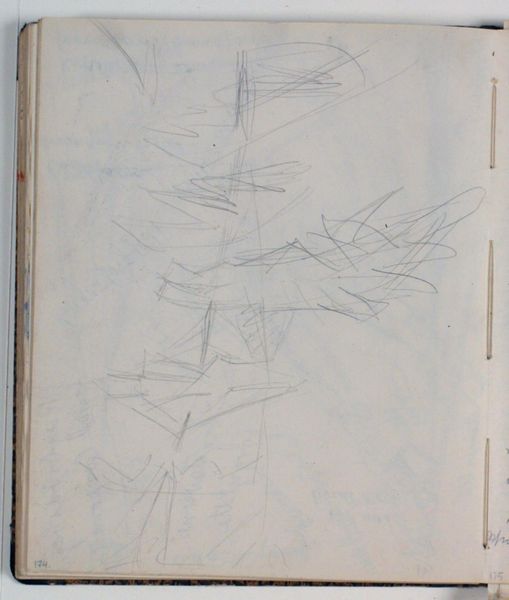
drawing
#
drawing
#
toned paper
#
incomplete sketchy
#
possibly oil pastel
#
personal sketchbook
#
underpainting
#
sketchbook drawing
#
watercolour bleed
#
mixed medium
#
sketchbook art
#
watercolor
Dimensions: 226 mm (height) x 185 mm (width) x 112 mm (depth) (monteringsmaal), 221 mm (height) x 184 mm (width) (bladmaal)
Editor: Here we have Niels Larsen Stevns's "Landskabsstudie," dating from between 1930 and 1936. It looks like it's on toned paper, possibly a mixed media of watercolour and oil pastel. The sketchiness and emptiness of the lower two-thirds make me think of a fleeting impression. What do you see in this piece that deepens our understanding? Curator: Given the period, it is intriguing to see Stevns returning to a very rudimentary form of landscape study. By the 1930s, both photography and increasingly sophisticated landscape painting techniques were well established, raising questions about the social function of such a sketch. This return to basics might reflect anxieties about rapidly changing cultural and social landscapes, wouldn’t you agree? Editor: That makes sense! It's like he's stripping away all the artifice to find something essential. Is it perhaps a reflection of broader trends in art at the time? Curator: Precisely. Consider the broader art world during that period. Many artists across Europe were grappling with questions of national identity and the role of art in society. Does this seemingly simple landscape become more loaded when we consider its potential for symbolic interpretation related to Denmark's natural and cultural heritage? Editor: So it's not just a landscape, but possibly a quiet, introspective comment on a nation's identity at a time of huge global upheaval? It definitely encourages me to see it differently. Curator: Precisely. Think about how landscape, especially in times of national stress, acts as a stage for political and cultural imagination. Studying seemingly simple artworks in relation to major socio-political events opens many possibilities of meaning. Editor: I never would have considered that connection. I appreciate the way you’ve reframed my understanding of a simple drawing. Curator: And I think considering student work gives us unique insights into pedagogical concerns around traditional landscape studies and contemporary art. Always a fruitful intersection!
Comments
No comments
Be the first to comment and join the conversation on the ultimate creative platform.
